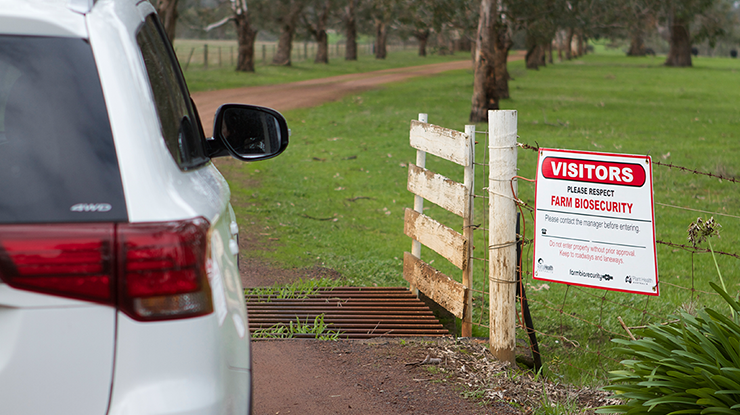 It's important to have a biosecurity plan in place to protect your business against the threat of Foot and Mouth Disease (FMD) and Lumpy Skin Disease (LSD).
It's important to have a biosecurity plan in place to protect your business against the threat of Foot and Mouth Disease (FMD) and Lumpy Skin Disease (LSD).
FMD/LSD: Four ways to protect your livestock and livelihood
Australia is currently free of Foot and Mouth Disease (FMD) and Lumpy Skin Disease (LSD), both of which have recently been detected in Indonesia. However, it’s important our industry doesn’t take this disease-free status for granted.
Significant preparations are already in place or underway to protect the red meat industry against these diseases should they arrive in Australia – but what can producers do on-farm now to protect their livestock and businesses?
Here are four ways you can be on the front foot and reduce the potential impacts of FMD and LSD.
1. Educate yourself and your employees
One of the most important steps to protecting your livelihood from these diseases is to gain an understanding of the symptoms of FMD and LSD, as well as how to report suspected outbreaks.
- Symptoms of Foot and Mouth Disease
- Symptoms of Lumpy Skin Disease
- How to report either of these diseases: Call the Emergency Animal Disease Watch Hotline on 1800 675 888.
2. Meet all traceability obligations set by our integrity systems
To protect your business against biosecurity threats, you must ensure you’re adhering to all traceability obligations. These include:
- meeting requirements under the National Livestock Identification System (NLIS) such as tagging an animal with an NLIS-accredited tag or device from their property (PIC) of birth
- recording each animal movement in the NLIS database
- completing eNVDs/NVDs so they’re clear, complete and correct.
Using this information, the NLIS can provide a life history of an animal's movements and discern if contact with other livestock occurred.
For more information on livestock transactions and movements, visit the Integrity Systems Company website: Livestock Movements | Integrity Systems
3. Review your on-farm biosecurity plan
Not only will a documented Farm Biosecurity Plan ensure you’re minimising the risk of disease outbreaks on-farm, but it’ll also help you retain your Livestock Production Assurance accreditation.
Here’s everything you need to know about keeping your biosecurity plan up to date:
4. Implement strategies proven to protect against disease
While every farm’s biosecurity plan will be different, there are many strategies that can be implemented Australia-wide to protect against FMD and LSD:
- ensure any livestock coming onto your property have a Livestock Health Statement/Declaration or equivalent
- inspect introduced livestock for signs of ill health on arrival, and quarantine all new stock for at least seven days
- minimise the risk of livestock straying onto or away from your property
- record all reasonable/practical movements of people, vehicles and equipment entering your property – the farm gate should be the control point, so post signs at the entrance to inform visitors of biosecurity procedures
- where possible, install facilities to disinfect footwear and farm vehicles.
Good biosecurity practices and early detection will be essential to reduce the potential impact of FMD and LSD if they ever arrive in Australia.
To learn more about the robust national plans in place for both diseases, check out Animal Health Australia’s emergency response arrangements under ‘Disease-specific documents’: AUSVETPLAN



